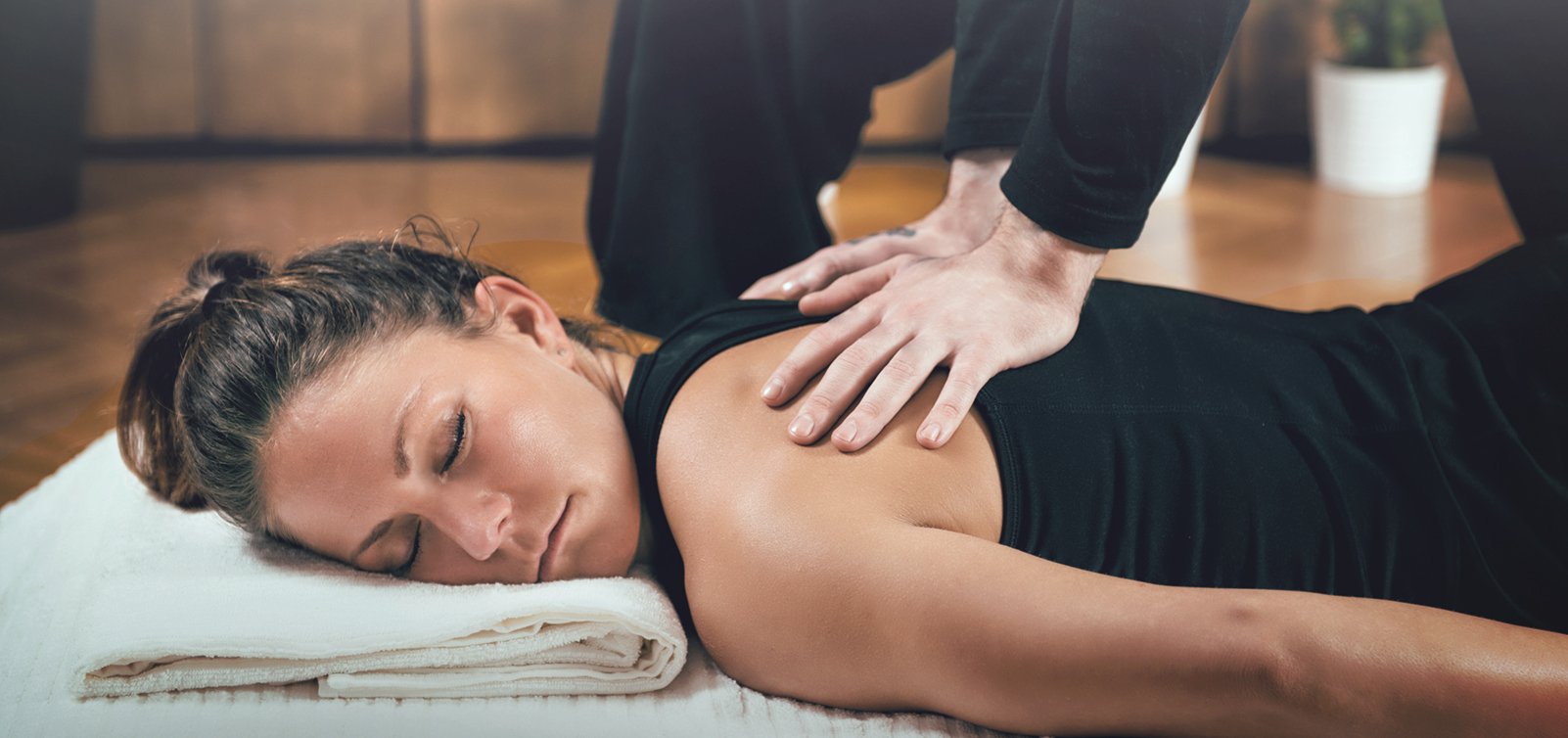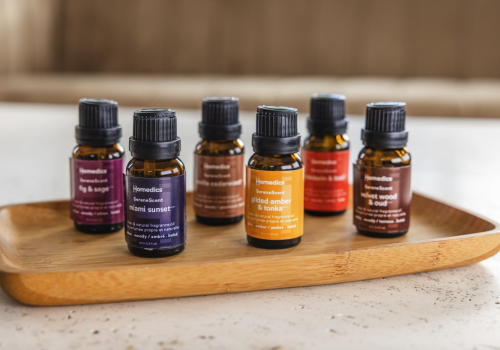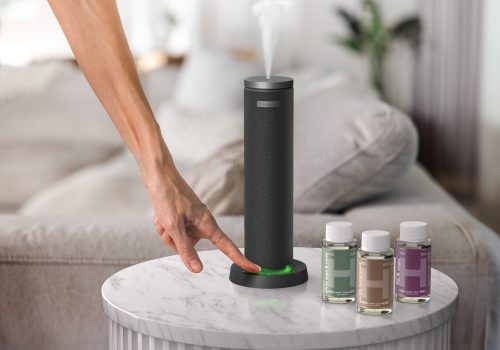All About Shiatsu Massage
Shiatsu massage therapy is a type of massage that has spread from Japan to become a popular technique around the world. A shiatsu massage focuses on restoring balance in the client by using finger pressure to improve the flow of his or her “qi”—the body’s vital energy.1
Learn about common uses for shiatsu therapy and some of the relaxation benefits of this practice and at- home shiatsu massage devices.
What Is Shiatsu Massage Therapy?
Shiatsu massage originated in Japan in the early 20th century. Based on traditional Chinese medicine, the technique incorporates more modern Western practices. There are different styles and schools of shiatsu massage therapy, but they all share some general principles.10
Traditional shiatsu massage therapy is a type of massage that involves applying pressure with the fingers to specific parts of your body. Translated to English, the term shiatsu means “finger pressure.”
Shiatsu massage is based on pressure points located across a person’s body. The principles of shiatsu say that a person’s qi flows through meridians, or pathways, and that a therapist can release blockages or imbalances of qi by applying to pressure to “vital points”—specific locations along the meridians.
Scientific research into the health benefits of shiatsu massage therapy has not been conclusive, but there are signs that this type of therapy promotes relaxation and may help relieve pain and improve sleep.6, 8
Today, shiatsu massage pillows, chair pads, and other devices exist that can mimic the sensations of a manual shiatsu massage from the comfort of your home.
How Shiatsu Massage Therapy Works
At the beginning of a shiatsu massage session, the massage therapist will evaluate you to determine the state of your qi and create a plan for the session. From there, the practitioner proceeds to begin the massage.
During shiatsu massage therapy, a therapist applies repeated, rhythmic finger pressure to various points on the body. These are acupressure points—places where the therapist can access the flow of qi, according to shiatsu principles.
A shiatsu practitioner applies deep, continuous pressure with his or her fingers and palms. The therapist will usually hold the pressure for up to 8 seconds before moving on to the next pressure point.
By applying pressure with his or her fingers, thumbs, and palms, a shiatsu therapist attempts to relieve tension and promote the flow of qi energy. The therapist continues to apply varying pressure to specific areas.
Some styles of shiatsu massage therapy also incorporate stretching to further manipulate the muscles. According to shiatsu principles, this helps energize the meridians.11
Usually, shiatsu massage doesn’t involve massage oil or any special equipment. That means you can have a professional shiatsu massage session fully clothed. Most shiatsu massages take place on a floor mat. Occasionally, though, therapists use a low table.
The simplicity of shiatsu massage therapy also makes it flexible. You can search for a shiatsu therapist that performs the massage in the style you prefer. Some practices might allow for in-home appointments. Others might let you choose between lying on the mat and sitting in a chair. Sometimes, a shiatsu massage session also involves Swedish or other Western massage techniques.12
Full training by a professional shiatsu massage therapist can take as long as 3 years, depending on the style and certification course.
Shiatsu Self-Massage Devices for At-Home Treatments
Self-massaging shiatsu chair pads and other devices can bring some of the tension-relieving benefits to your home. Shiatsu massage cushions, for example, imitate the kneading motions of a shiatsu therapist’s hands to deliver firm pressure on any compatible chair.
A more portable solution, shiatsu head and neck massagers incorporate massaging nodes into wraps or pillows. Shiatsu foot massagers also exist to provide soothing relief for tired feet.
When time or financial constraints make booking a professional shiatsu massage difficult, these at-home devices can provide a massage experience inspired by shiatsu that may help promote relaxation.
How Is Shiatsu Different from Other Massage Techniques?
A shiatsu massage is similar to some other popular massage techniques, but with several important differences in application and principle.
Shiatsu Massage vs. Deep Tissue Massage
A deep tissue massage involves applying slow, firm strokes of pressure to muscles and tendons. Deep tissue targets muscle pain—what some people call muscle “knots”—by focusing on massaging the muscle fibers and stiff tendons. This technique is less rhythmic than shiatsu massage therapy.
Shiatsu Massage vs. Swedish Massage
Swedish massage therapy is a popular, general form of massage that aims to soothe and relax by kneading the uppermost layers of muscles. A Swedish massage may be more gentle than a shiatsu massage and focus on much more general areas of the body.
Shiatsu Massage vs. Lymphatic Drainage Massage
Lymphatic drainage massages aim to improve circulation in the body, thus helping circulate lymph fluids. Lymph fluids help remove cellular waste and harmful pathogens from your body.9
Benefits of Shiatsu Massage
Scientific research has not yet confirmed many of the purported health benefits of shiatsu massage therapy. Practitioners of the treatment claim that shiatsu helps strengthen the body and improve its ability to balance and heal. Others believe its benefits to include stress relief and a reduced risk of illness. Reports of these benefits are merely anecdotal.
However, some studies have identified several benefits of shiatsu massage. A 2015 study found that 20- minute shiatsu massage sessions could help patients control anxiety.2 The study combined shiatsu massage therapy with analgesic medications. Another study found that shiatsu massage therapy could effectively reduce lower back pain.3 Participants underwent four shiatsu massage sessions. When the researchers called their participants two days after each treatment, the majority of participants reported positive effects.
Research has also indicated that shiatsu may have positive effects on pain intensity, pressure pain threshold, and sleep quality in people with fibromyalgia.4
What Does Shiatsu Feel Like?
During a shiatsu massage, you’ll feel rhythmic, steady pressure from the shiatsu practitioner’s fingers and palms. Because the therapist applies deep, localized pressure for several seconds at a time, you might feel a temporary tenderness in the area. Overall, the sensation can be relaxing or invigorating.
Shiatsu shouldn’t hurt; if you do feel pain during a session, tell the therapist so he or she knows to adjust the pressure. When using a shiatsu massage device at home, adjust the intensity of the kneading so that it’s not painful or irritating.
Uses for Shiatsu Massage
Uses for shiatsu massage include both treatments that are research-based and treatments that haven’t yet been proven successful by scientists. People seek shiatsu massage therapy to treat a variety of health conditions, including the following:
- Persistent pain (often neck, shoulder, and lower back pain)
- Arthritis pain
- Headaches and migraines
- Tension, stress, and anxiety
- Insomnia
- Sciatica
- Menstrual issues
While anxiety control and relief from lower back pain are supported by scientific research, many of these uses have not yet been tested conclusively. Much of your experience with shiatsu and its related effects in these types of treatments may be subjective.
Shiatsu massage therapy performed by trained therapists is fundamentally a safe, non-invasive form of massage therapy. Cases of serious or dangerous side effects have been isolated and extremely rare.5 Negative side effects of shiatsu are not typically more severe than brief tenderness or mild, temporary soreness.
Safety and Side Effects of Shiatsu Massage Therapy
Shiatsu massage does offer several positive effects. In one study that measured symptom groups over six months of shiatsu treatments, participants reported significant improvements in tension, stress, and “body structure problems.” Additionally, the majority of users went on to make other positive changes to their lifestyles as a result their participation in shiatsu massage therapy sessions.6
At-home shiatsu massage devices may contribute to similar benefits, including tension relief for muscles, when combined with a healthy lifestyle.
Other reported but unconfirmed positive effects of shiatsu massage therapy include:
- Relaxation
- Balance
- Energy
- Improved posture
If you have any existing injury, muscle strain, or are recovering from a bone fracture, you should not undergo shiatsu massage therapy. If the injury is completely localized, you can inform the massage therapist to avoid it. If you are using a self-massaging device, don’t apply it near existing injuries.
Relax and Relieve with a Shiatsu Massage
Shiatsu massage therapy is popular around the world for its relaxing, tension-relieving pressure. Whether you schedule a manual massage or choose an at-home shiatsu massager, you can use the time to calm your mind and enjoy the soothing pressure.
When deciding on a shiatsu massager for your home, look for a model that kneads in all four directions across your back and neck. You can also opt for one with a heating feature for deeper relaxation.
Medical Disclaimer: This content is provided for informational purposes only and not intended to be a substitute for professional medical advice, diagnosis or treatment.
Sources





